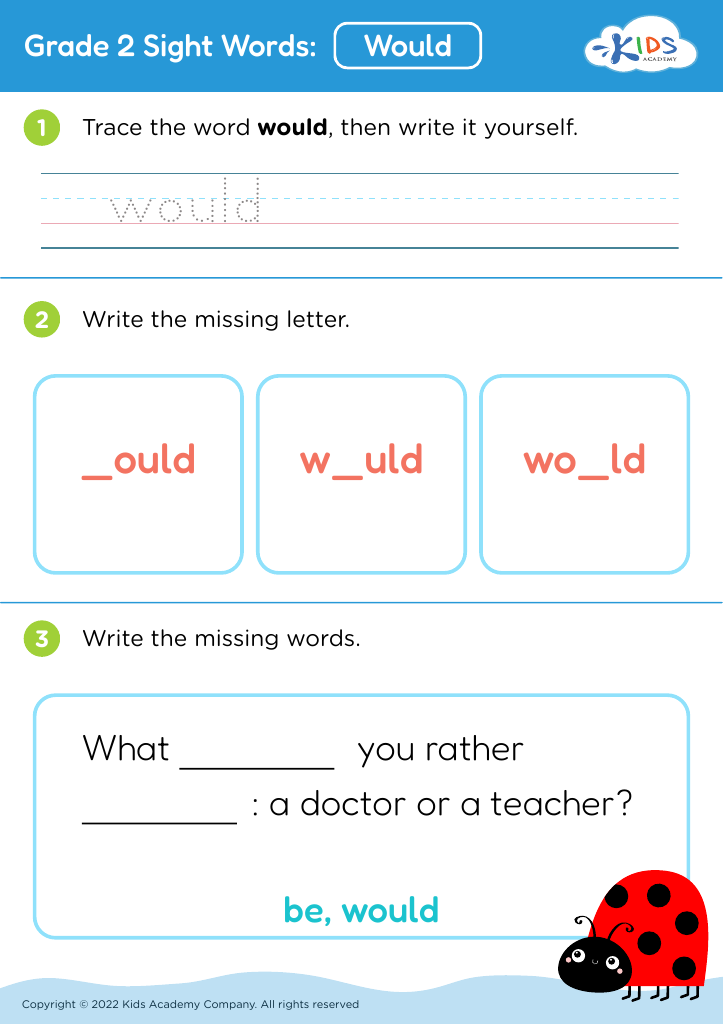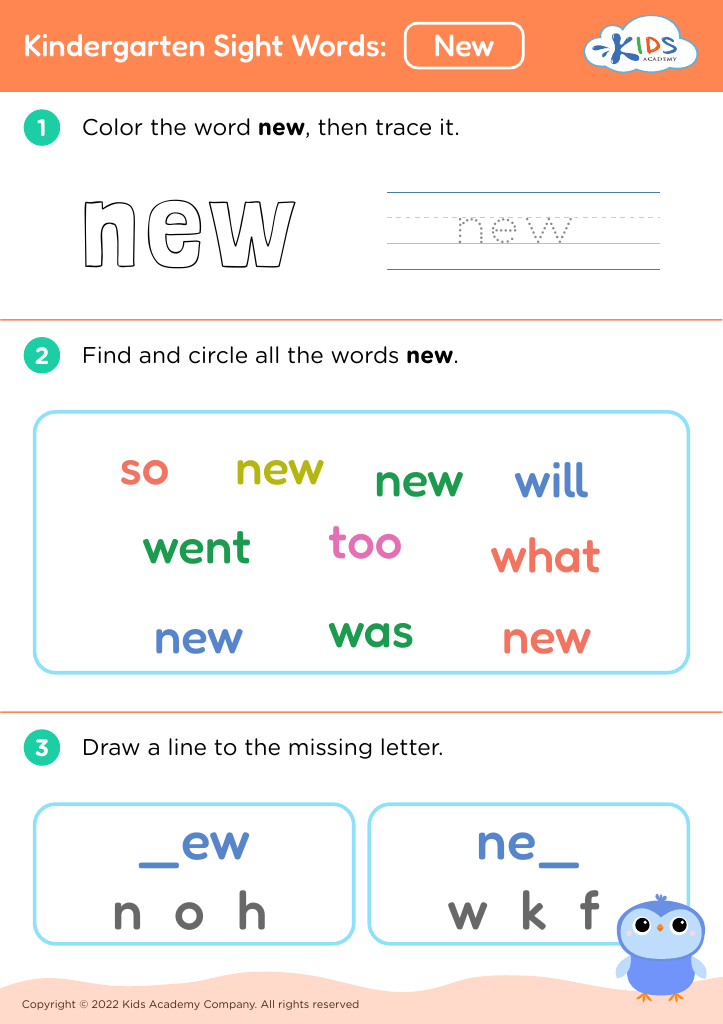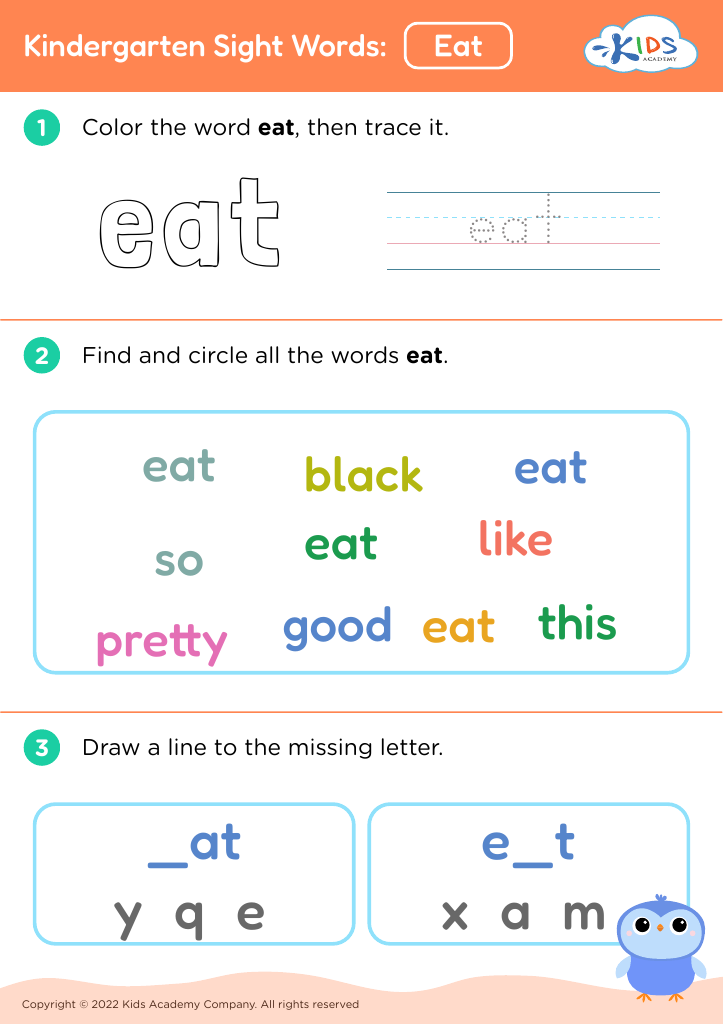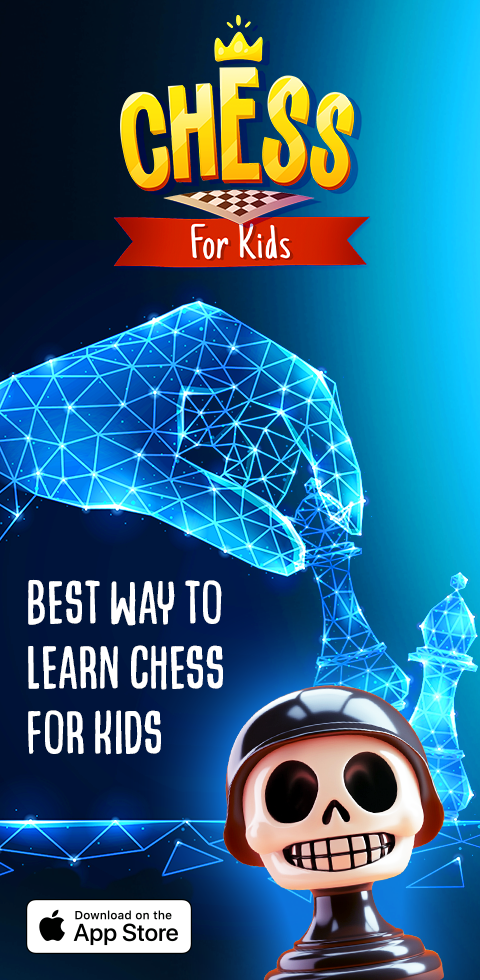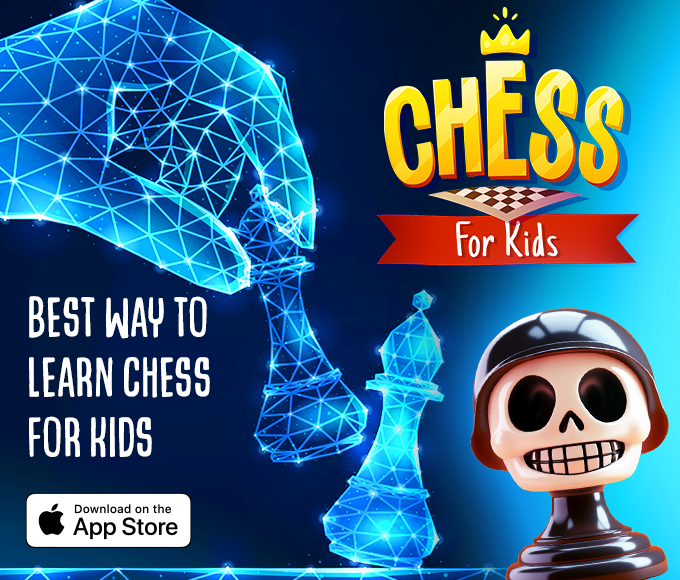Color recognition Reading Worksheets for Ages 5-7 - Page 2
29 filtered results
-
From - To
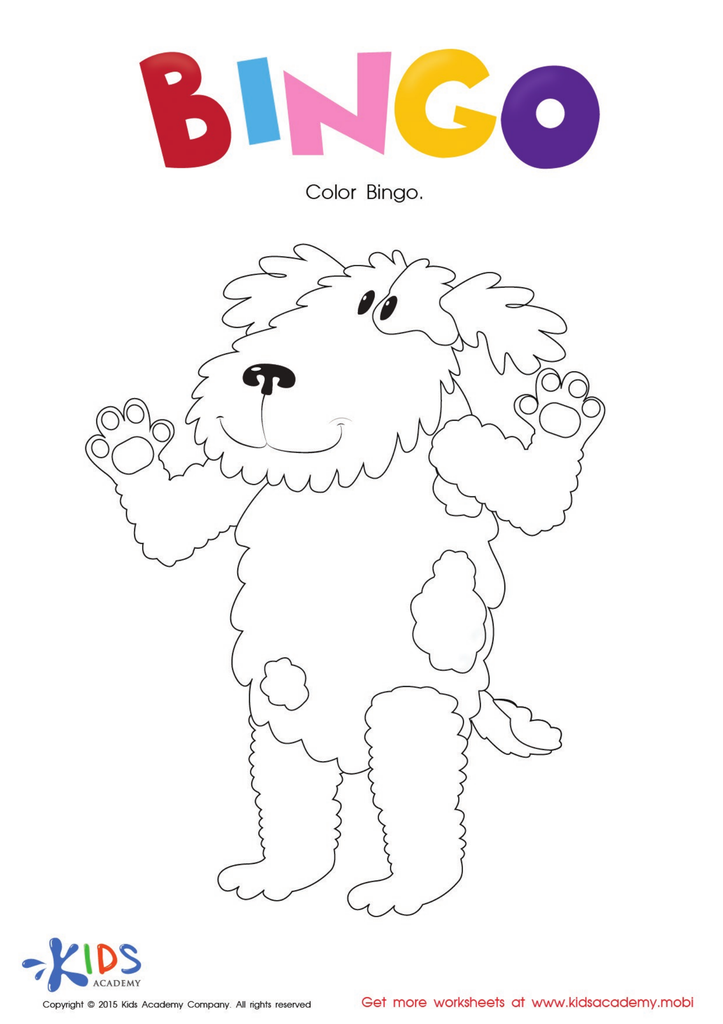

The Bingo Song: Coloring The Dog Worksheet


Twinkle, Twinkle, Little Star – Coloring by Numbers
Color recognition is a foundational skill in early childhood education that significantly impacts literacy development for children aged 5-7. Parents and teachers should prioritize this aspect for several reasons. First, color recognition aids in vocabulary expansion; children learn to associate colors with objects and emotions, enriching their language skills. For example, identifying a "red apple" helps create mental images and connections that enhance comprehension when they encounter these terms in reading.
Moreover, understanding colors can boost cognitive development and critical thinking. Kids often categorize objects by color, which is a fundamental analytical skill that paves the way for more complex tasks like sorting, matching, and problem-solving. This foundational skill also supports socialization—engaging in discussions about colors helps children practice turn-taking and conversational skills, essential for overall literacy development.
Finally, color recognition can make learning immersive and fun. Utilizing colorful books, arts, and playful activities not only piques students’ interest but also motivates them to engage more deeply in the reading process. Powerfully interlinked, color recognition and reading form a critical element in fostering a lifelong love for learning, making it pivotal for educators and parents to nurture in young learners.

